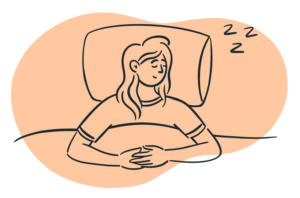Mattress Care and Cleaning Guide
Disclosure: By clicking on the product links in this article, Mattress Nerd may receive a commission fee at no cost to you, the reader. Read full disclosure statement.
A mattress is an important investment in your health and wellbeing. It gently supports the entire body and keeps the spine in a neutral position throughout the night. This helps alleviate pain at pressure points, reduces muscle strain and tension, and improves sleep.
How many people are satisfied with their mattress? Mattress Nerd teamed up with Nolah Mattress on a survey among sleepers and discovered that most people rated their mattresses as “average.” And — no surprise here — complaints of mattress sagging increase with mattress age. The biggest mattress complaints were sagging or wear (25.8%); too much pressure on bones, joints, or pain points (24.3%); and the mattress retaining too much body heat (17.8%) and thus sleeping hot. Luckily, many new mattresses on the market today specifically target these issues.
But, let’s face it, good mattresses aren’t cheap. You can expect to pay around $1,000 or more for a quality mattress. When people spend that much on a mattress, they expect it to stand the test of time. In fact, the No. 1 feature survey participants look for when buying a new mattress is durability.
A good quality mattress should last 7-10 years and possibly longer if it’s well cared for, according to the experts at Nolah Mattress. So how can you get the most life out of your new mattress? Through regular maintenance and proper cleaning. Read on to learn more.
How to Maintain the Quality of Your Mattress
It’s relatively simple to maintain a mattress. It just takes a little time and some know-how. Here are some recommendations from our mattress experts:
- Rotate your mattress: Putting pressure on a mattress at the same spot causes it to sag and create indentations in the foam, making the mattress lumpy and uncomfortable. Rotating the mattress — turning the top of the mattress to the foot of the bed — spreads out where pressure points hit the mattress. Our experts recommend rotating your mattress every six months to a year, whether you’re sleeping on memory foam, latex, innerspring, or hybrid. Before rotating, be sure to check your mattress care information. Some mattresses shouldn’t be rotated, such as those with zoned support.
- Flip your mattress: Flipping your mattress is another way to help distribute the weight placed on it. However, some mattresses should not be flipped. Be sure to check the mattress manufacturer’s recommendations for flipping before doing so.
- Use a mattress protector: Mattress protectors are placed between the mattress and the fitted sheet. They protect the mattress from contaminants such as sweat, dirt, dust mites, and allergens, and help prevent the growth of mold and mildew. Mattress protectors ensure cleaner sleep. But they also keep the mattress clean and protected. A soiled mattress could void warranty claims should you need to file one. One word of caution: be sure that your mattress is completely dry before sealing it in a mattress protector otherwise your mattress might breed the growth of mold and mildew.
- Use proper support: Mattresses need a good base in order to evenly distribute the weight of the mattress as well as that of the sleeper. Inadequate support can cause the mattress to sag and accelerate wear and tear. There are a variety of mattress foundations, including box springs, platforms, slats, and adjustable frames. Be sure to only use mattress bases recommended by your mattress’s manufacturer.
- Move with care. Proper care should also be taken when moving your mattress to another location. Whether you are moving the mattress on your own or are using a moving company, you’ll want to slide your mattress into a mattress bag. These inexpensive, heavy-duty plastic bags envelop the entire mattress and help ensure they remain clean, dry, and critter-free during transportation.
Avoid moisture: High humidity climates can spell disaster for mattresses. Moisture in the air can get absorbed into the mattress’ fabric and foam, causing mildew and water damage. Even moisture from body heat can cause problems. If you live in a humid environment, place your mattress outside in the sunlight for three or four hours to allow it to air out and dry completely. However, be sure not to leave your mattress sitting outdoors overnight as condensation increases at dusk through dawn and can dampen your newly air-dried mattress.
How to Clean Your Mattress
Another important mattress maintenance tip is to clean your mattress regularly — every six months, if possible. Manufacturers sometimes provide cleaning instructions, but the following steps are usually involved with most mattresses:
- Remove and wash all bedding. This includes all bedding, blankets, sheets, mattress pads and mattress protectors. If the mattress has a removable mattress cover, remove and wash it according to the manufacturer’s instructions.
- Vacuum the top and sides of your mattress. You can use your vacuum’s upholstery attachment, if you have one.
- Spot clean any stains or heavy soiled areas using a gentle cleanser and blot with a clean, damp cloth. Be sure not to saturate the mattress foam. Once the stain has been treated and blotted, allow time for the mattress to dry.
- Once the mattress is completely dry, sprinkle it with baking soda to deodorize the mattress. Give the baking soda a couple hours to soak in before vacuuming the mattress again.
- Flip the mattress and repeat steps 2-4.
Final Thoughts
A new mattress is an investment. A good one can last you a decade or more, but only if it is regularly maintained and properly cleaned. Keeping your bed well cared for can also ensure your mattress stays in optimal shape, giving you the best foundation for good sleep. The better care you take of your mattress, the longer your investment will pay off.



